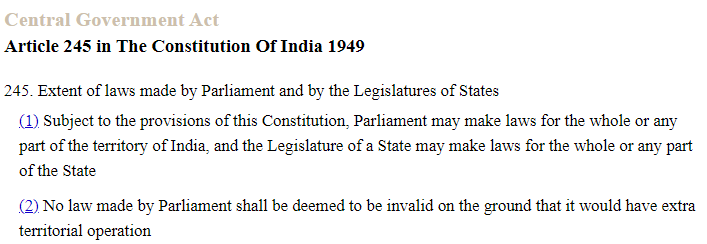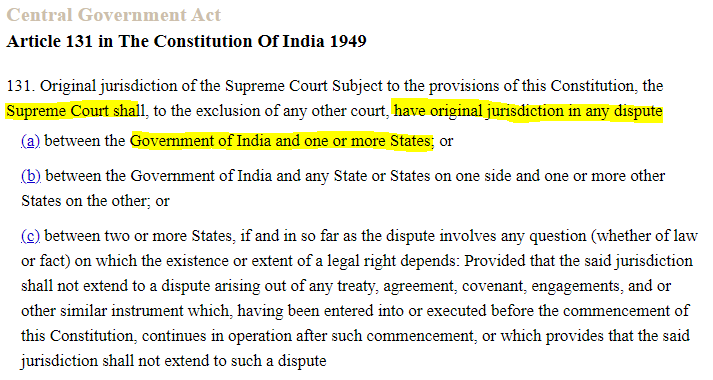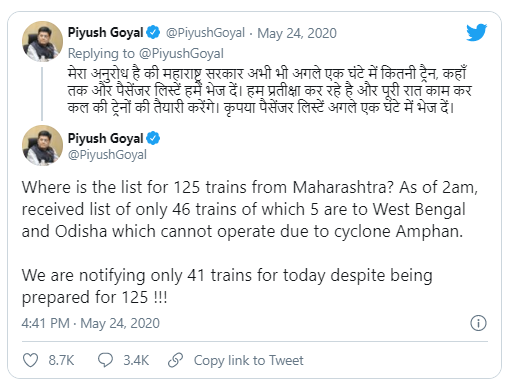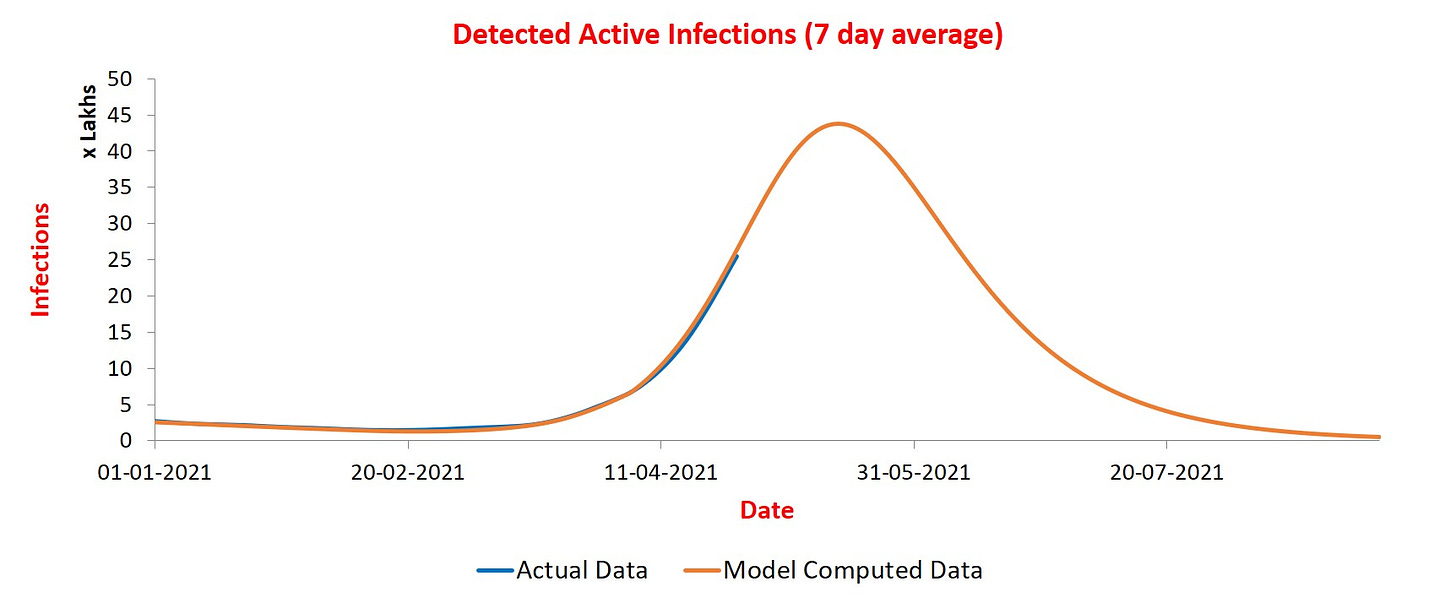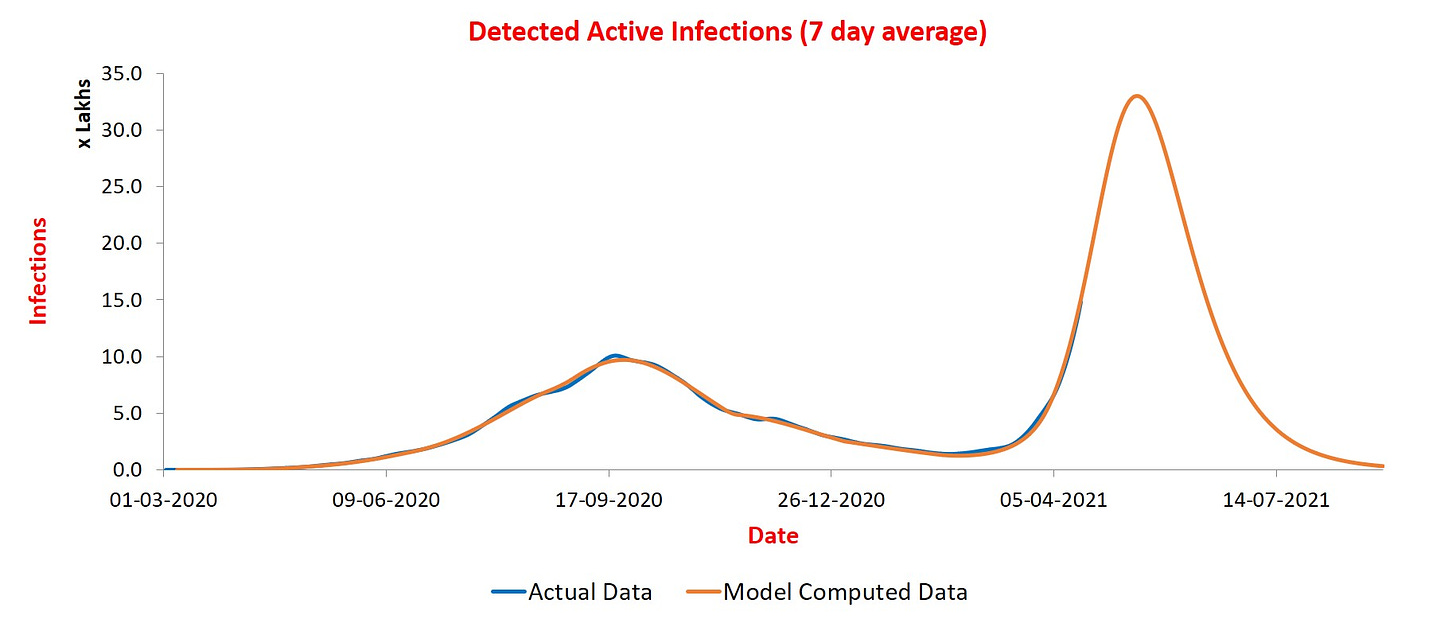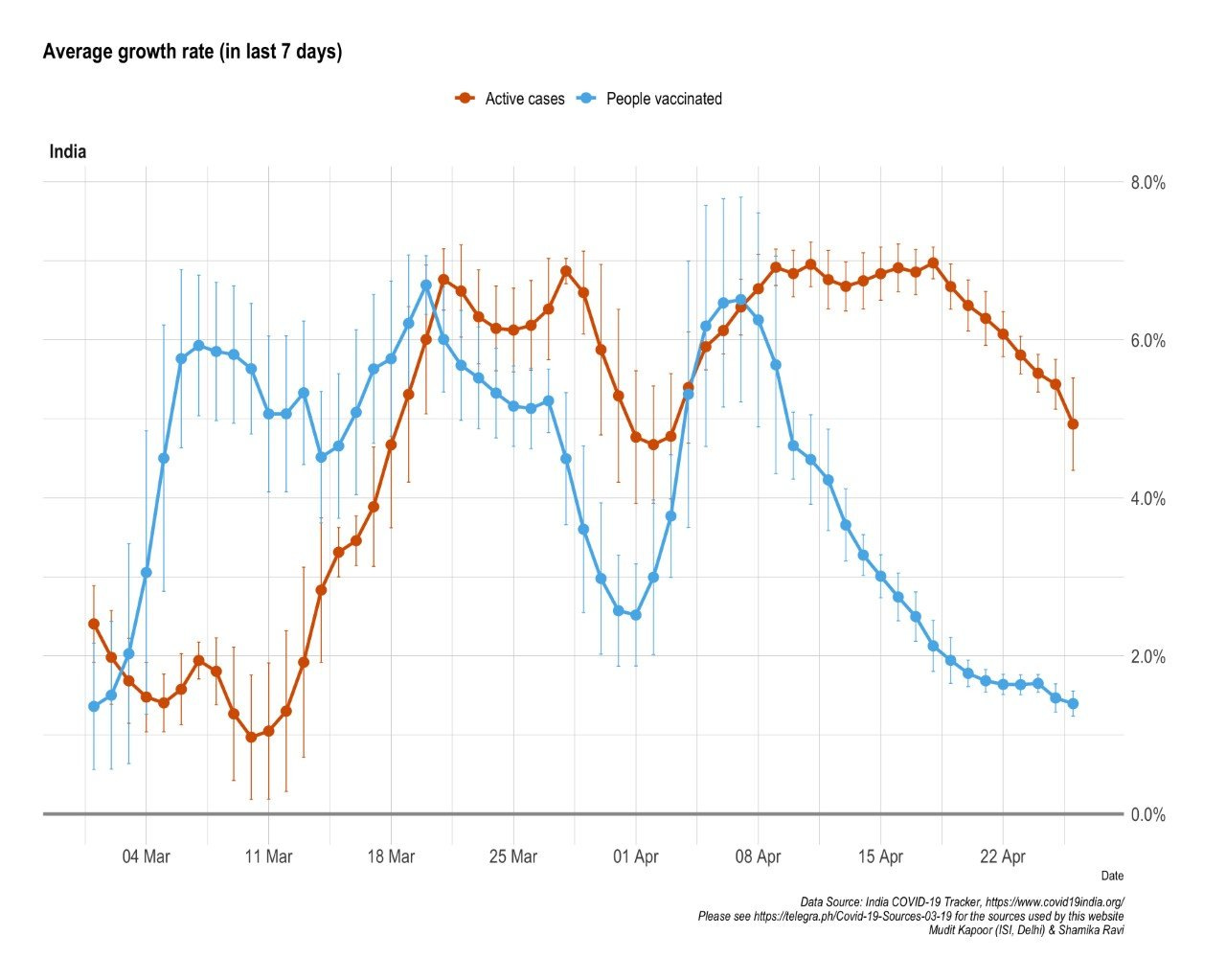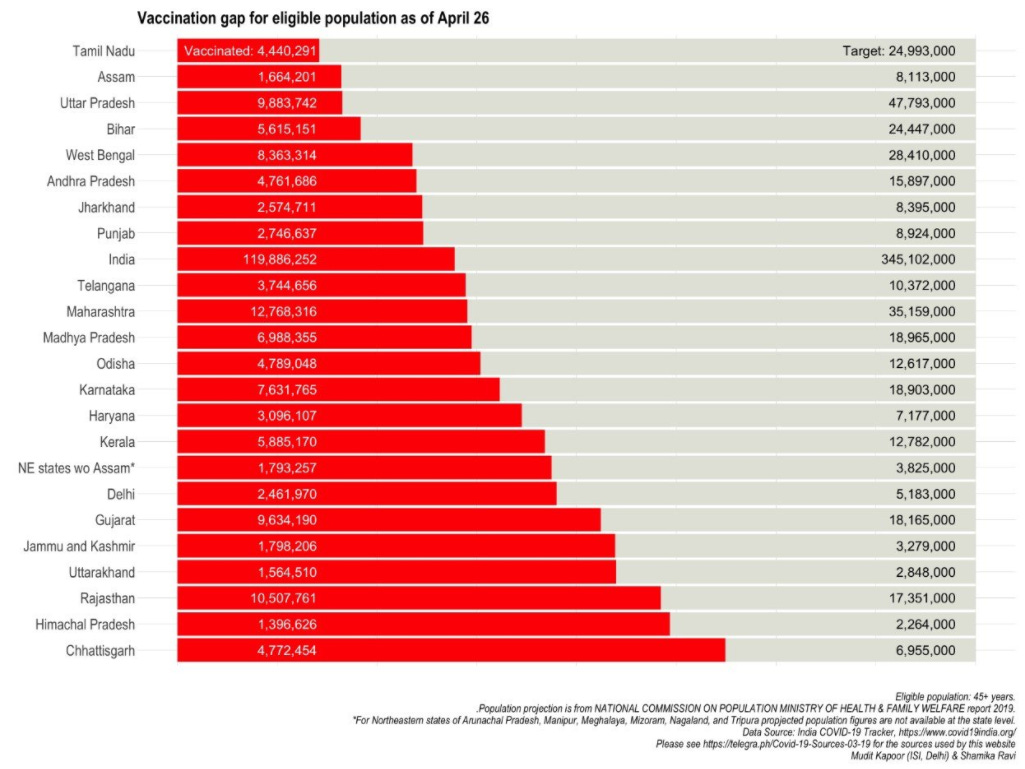Insightful newsletter of Drishtikone: Issue #291 - Modi, Center-State and the Forked Tongues
Modi's brutal lockdown - ran headline last year when Disaster Management Act was enforced. Delhi & Maharashtra created the migrant crisis. Today, the arguments have changed. He didn't push enough!
“Un-winged and naked, sorrow surrenders its crown to a throne called grace.” ― Aberjhani, The River of Winged Dreams
Those who have to hate you and your well-being will invent many reasons to justify their hate. They will use two opposite arguments for the same principle and demonize you for both.
That is what the global media and the Indian critics of Modi are doing.
Public Health, law enforcement and police is the complete prerogative of the State as per the Indian constitution. Yes, the Center can find loopholes and jump through hoops to enforce one blanket law or rule across the nation during times of emergency.
But as the lockdown in 2020 showed, the unscrupulous like the Delhi and Maharashtra governments can mess that up very quickly with a pliant press and spineless elite.
The Indian system is a mess because politicians can use people as cannon-fodder. We saw that in how Udhav Thackeray and Kejriwal abandoned all responsibility last year.
Let us analyze by going into the details of legal space and options that Modi had then and now.
India’s Federal Structure
The Indian Constitution clearly and forcefully demarcates the lines between Center and State powers. The powers governing India’s Federal structure are defined in the Indian Constitution itself. Articles 245 to 263 lay out the powers that Center and State have with respect to legislative, administrative and financial functions.
Constitution’s 7th schedule is divided into three lists with respect to law-making powers that Center and State have. These are the Union list, State list, and Concurrent list. (Source)
The State list has 61 items on it. Let us look at some of the more relevant ones.
Police, law enforcement, and health - are State Subjects. The Indian Parliament cannot pass laws that encroach the States’ powers.
As per Bar & Bench, when the Center invoked the Disaster Management Act, 2005 for handling COVID pandemic, there were challenges from the states.
The most contemporary example of the centre-state dispute is the Disaster Management Act, 2005, which was invoked in light of the COVID-19 pandemic. The Act causes discontent among states as the Central guidelines are binding on them, even though public health is a state matter on which the Parliament cannot legislate. (Source)
It is believed that the real challenge to the ability of the Central Government to make laws comes from the reading of Article 131. This article gives the power of resolving the Center-State disputes to the Supreme Court.
Now, when the Citizenship Amendment Act 2019 was passed by the Indian Parliament, two state governments challenged that. Kerala and Rajasthan. Using this very article. The reason why they could not go far enough was that they had very little to play with.
It is no one’s case that the validity of a Central legislation cannot be challenged by the Government of a State under Article 131. However, the same has to be tempered by way of the Constitution Bench judgment in State of Rajasthan[3]whereby two conditions were laid out as already exhibited hereinabove. For invoking Article 131 therefore, there has to be a dispute between the legal/constitutional right or authority or power asserted by the defendant vis-à-vis the plaintiff. The constitutional power of the Central Government to enact the Amendment Act, 2019 as per List I (Union List) of the VIIth Schedule having nowhere been challenged, the pre-requisite conditionalities under Article 131 are not satisfied. (Source)
But then in the State of Jharkhand v. State of Bihar, the Supreme Court went the other route.
In fact, the Supreme Court, vide its judgment in State of Jharkhand[4] furthered the abovecited position of law and came to the conclusion that there isn’t any bar to a test of constitutional validity of a statute under the original jurisdiction of the Supreme Court. However, the same has to concern a disputed question of law/fact that impinges, erodes, diminishes or even outrightly strips the legal right asserted by a ‘party to the proceedings’. (Source)
These two judgments - State of Madhya Pradesh v. Union of India and State of Jharkhand v. State of Bihar - have introduced an element of contradiction between the stances that the Supreme Court has taken. So this matter has now been referred to a larger Bench of the Supreme Court.
Nevertheless, the powers distribution between the States and Center are real and not a facade.
Even with respect to the subjects in the Concurrent List, the laws made by the State Assembly overrule those passed by the Indian Parliament. This is precisely what the opposition was playing at during the farm laws.
With Sonia Gandhi advising Congress Chief Ministers to pass laws in their states under Article 254 (2) of the Constitution to negate the three farm laws which got the nod from the Rashtrapati Bhavan, the opposition is headed for clashes with the Central government. …… Article 254(2) refers to a scenario where a law made by a state legislature concerning any matter that falls in the Concurrent List contains any provision repugnant to the provisions of an earlier law made by Parliament or an existing law, with respect to that matter. In such a case, the law made by the state legislature will prevail, provided it is reserved for the consideration of the President of India and receives his assent. (Source)
Have we already forgotten that?
The champions of the State governments’ powers in the Constitution were at that time (during CAA, NRC and Farm laws protests) challenging Center’s right to make any laws that impacted any of the States.
At that time, Modi was demonized precisely for pushing laws in the parliament that were pushing the envelope of the Indian federal structure.
Now, they are turning their entire federal structure arguments on their heads. This time around, Modi is being demonized for not encroaching upon the areas that are firmly and clearly State subjects!
No one is even bothered about the laws, the Constitution, the Federal Structure, or the well-being of the masses. They have just one objective - hit Modi.
Laws to fight Pandemics and the Modi-hate gangs
It is not that the Central government has not tried to change laws to fix the anomaly where the Center can push measures down to the citizens to ensure that a consistent front is put up during such emergencies.
Around three years back, the ministry of health put up for discussion the draft Public Health (Prevention, Control and Management of Epidemics, Bio-terrorism and Disasters) Bill, 2017. The draft Bill mentioned the role and responsibilities of the Centre and states in a medical emergency. The Bill, however, never saw the light of the day. (Source)
But at that time, the Scroll-types were raising the specter of “human rights.”
The Bill suspends liberties of people while barely holding the government accountable, said experts (Source)
The effect was that the bill never went through. And, it could have been another weapon in the hands of the human rights vultures. (On another note, please read Issue #140 - Amnesty International: 'Violent Jihad is a Right!')
So when the COVID pandemic hit India, guess what the Central Government have in their hands from a legal standpoint to play with? In March 2020 the Central Government invoked the ‘Epidemic Act’ and ‘Disaster Management Act’ to fight COVID. The provisions of these acts and implementation were limited.
The section includes special measures to be taken by the Centre to “prescribe regulations as to dangerous epidemic disease.” It also includes the detention of people or any vessel that come from international shores and are seen potent to spread the epidemic in the country. (Source)
All this was not without issues or challenges.
As the virus quickly spread across the country, many experts called for the imposition of an emergency, which could give the Centre wide-ranging powers. However, such a measure would have faced implementation challenges. “The Constitution does not directly mention health emergencies of the kind India is currently experiencing. However, once central legislation becomes applicable, Article 256 applies. That provision says that states must comply with central laws, and the Centre can issue directions to demand compliance,” says Shubhankar Dam, professor of public law and governance, University of Portsmouth School of Law, UK. (Source)
This was not so simple though. The center had to jump through several hoops to push its power.
Entry 29 of the Concurrent List provides for the “prevention of the extension from one state to another of infectious or contagious diseases or pests affecting men, animals or plants.” However, as the DM Act isn’t specifically aimed at targeting epidemics, the Centre couldn’t use this provision to enact the law. It used another entry — “social security and social insurance; employment and unemployment” — in the List to trigger provisions of the Act. “Though the DM Act has been pressed into service and rightly so, it is envisaged primarily for natural calamities. (Source)
This meant that the States could challenge its notifications, its writ, and laws. Which they did.
And faced the flak for it.
The guidelines issued under the national disaster management law do not provide for restriction on movement of individuals (the issuance of overly broad guidelines by the Centre with little or no consultation with state governments itself lacks legitimacy but that is for another day). And the Regulations issued by governments in pursuance to the 1897 Act — Karnataka, Maharashtra, New Delhi, Tamil Nadu and West Bengal — do not seem to restrict movement of individuals. As already pointed out here, currently under the law, there is no "nationwide" lockdown as such: What is banned or legally prohibited is public gatherings. The answer perhaps lies in Prime Minister Narendra Modi's televised address. The "stay at home for 21 days" diktat is being perceived by those implementing the lockdown on the ground level as coming from a rulebook, capable of being legally enforced on the ground. It is deeply troubling to see that the prime minister's guidance and advisories — well-intentioned as they are — have been taken as de facto legal status by those implementing the lockdown. (Source)
The entire world’s media was after Modi at that time for implementing the Disaster Management Act and pushing for the lockdown. Remember these headlines?
The Virus Trains: How Lockdown Chaos Spread Covid-19 across India
“‘I just want to go home’: the desperate millions hit by Modi’s brutal lockdown”
While the Modi government had introduced the lockdown, Maharashtra’s Thackeray government was playing its own game. Remember that 2 AM tweet from Piyush Goyal as the Maharashtra Chief Minister Thackeray failed to manage the crisis and provide the information for the number of trains needed to leave Mumbai and their destinations.
Meanwhile, Kejriwal had created a situation where the migrants were pushed out of Delhi, even when the government could have cared for them! Remember the missive from Amit Shah to Kejriwal?
Lieutenant Governor Anil Baijal has written a strongly-worded letter to Chief Minister Arvind Kejriwal on the exodus of tens of thousands of migrant workers from the national capital Delhi over the weekend that forced the Centre to ask bordering states to seal their borders and look after the migrants. The missive was sent after Prime Minister Narendra Modi and Home Minister Amit Shah expressed grave concern over exposing the migrants to health hazard during lockdown to Delhi Chief Minister Arvind Kejriwal. (Source)
We had unscrupulous state governments that did not want to care for the migrants or the poor and used the pandemic to settle their political scores against the Center using migrants as cannon fodder.
The reason for which people are dinging Modi now - not imposing lockdown or restrictive measures - they were dinging him at that time for the exact opposite - imposing the restrictions! Do you see how the game is played?
All this while, Center was sending funds to the states.
Center kept the money going
In April 2020, the Center sent the share of the States to fight COVID.
The Ministry of Finance on Monday transferred Rs46,038 crore to the states as part of their share in central taxes and duties for April to help them fight the covid-19 pandemic. (Source)
Despite the slowdown in revenues, the grants to the states increased by 19%. All to use the money to fight COVID.
"Between April and July, the sum total of devolution of taxes plus grants-in-aid to states, including centrally sponsored schemes, increased by 19 per cent to Rs 4.06 lakh crore from Rs 3.42 lakh crore in the same period last year. In short, while our revenues fell, we sustained the flow of funds to states," he said in an interview to The Economic Times. Further, in view of the COVID-19 pandemic, the central government also allowed an additional borrowing limit of up to 2 per cent of Gross State Domestic Product (GSDP) to states for the year 2020-21. "This amounted to Rs 4.27 lakh crore being made available to states. The Centre has already granted permission to states to raise the first 0.5 per cent in June 2020. This made an additional amount of Rs 1,06,830 crore available to states. On the request of states, the limit of using the State Disaster Response Fund (SDRF) has been increased from 35 per cent to 50 per cent. This was done to ensure more finances with states to fight the coronavirus," the prime minister elaborated in his first interview to the media after the pandemic. (Source)
As we shared in our previous newsletter, the states did precious little. Issue #290 - States fail, Center Hit for COVID
The trajectory of COVID in India
We are where we are now. It would be nice to know when we would be able to see the light at the end of this tunnel. For this let us check the predictions from the model created by an IIT Kanpur professor.
As per their latest graph, the Indian curve is following the trajectory they had predicted.
Per their model, they are predicting a peak for new infections to be around May 4th through 8th. The active infections will be between May 14th to 18th.

Prof Agrawal and his team had started mapping the trajectory of the pandemic cases in early April and they have been refining and tweaking their model as new information came in.
When the team did just that - predicting ‘active’ infections as opposed to ‘new’ infections, their graph fell in line.
Partly the curve will be turned around because of the vaccinations.
Now, here is the issue - the vaccination of people is a race against time while battling the infectious nature of the virus as well.
As this strain of virus becomes more infectious via mutations and grows rapidly, the growth percentage for people vaccinated goes down. The vaccines however do mean that there is protection from future waves.
By now, India has vaccinated 35% of the currently eligible population (45+). It is not complete and far away from where it should be, but it is still quite a lot. The
The best record is by Chhattisgarh. Tamil Nadu is the worst.
How many have been vaccinated - by gender? Total vaccinated: 119,886,252 (Source)
Male: 62,534,884
Female: 57,335,805
Third gender: 15,563
Total doses administered: 142,524,947
First dose: 119,886,252
Second dose: 22,638,695
So there is light at the end of the tunnel. Just that the tunnel is way too long and too many serpents are lurking to hit the hand that guides India through this darkness.
market corner: 10 quick bytes
Govt may attain up to 90% of FY22 disinvestment target on strong liquidity - more
Indian real estate institutional investments up 21% in Q1 at $922 million - more
Indian Railways deploys 2670 covid care beds at nine stations - more
India's 4G user base may grow to 820 million in FY22 as telcos expand coverage: Crisil - more
Adani Ports waives charges for ships carrying COVID equipment, gives priority berthing - more
Supreme Court allows Vedanta to operate Tuticorin Sterlite plant for producing oxygen - more
Short-format content brand, Flick from The Zoom Studios sees unprecedented growth - more
Banks, UCBs with more than Rs 15,000 cr assets must have two auditors - more
SME IPOs reach an all-time low with 28 listings in FY 2021 - more
Explosive-laden 'drone' boat targets Saudi port of Yanbu - more
nota bene
Farmers’ protest was a super-spreader: The UK strain of the coronavirus, which is markedly more virulent, is more prevalent in several northern states, including Punjab, the genome sequencing data from the National Centre for Disease Control (NCDC) reveals. Two scientists from central government labs asserted that large gatherings in Punjab were responsible for the widespread transmission of the variant in Delhi, Uttar Pradesh, and Haryana, said a report published in The Hindu. The scientists claimed that farmers’ protests were one of the “super spreader” events that may have contributed to the amplified spread of the B.1.1.7 variant, popularly known as the UK variant. (Source)
Congress goons ransack Company because of Ad: Times Now has reported that Congress workers have ransacked the office of a beverage company in Mumbai. The beverage manufacturer Storia Foods came up with a promotional advertisement recently. One of the characters in the advertisement shares uncanny similarities in his mannerisms and style of talking with Congress leader Rahul Gandhi. He is also shown to have mistaken a cow for a machine in the advertisement. This is the point when his mother is shown correcting him. (Source)
Pakistan diplomat caught stealing in Seoul: According to the police of Seoul, the capital of South Korea, two diplomats of the Pakistan Embassy were caught shoplifting at a store on Saturday (April 24). According to a report published in The Korea Times, Yongsan Police Station said the two were caught stealing items at the same store in Itaewon, Yongsan District, on different dates. One allegedly stole chocolate treats worth Won 1,900 ($10) on 10 January, and the other a hat worth Won 11,000 ($1.70) on 23 February. (Source)
Vaccinated can ditch masks: The Centers for Disease Control and Prevention (CDC) has released updated guidelines detailing activities that vaccinated people can safely resume, including attending small outdoor gatherings without the need to wear a mask. (Source)
Loneliness causes cancer: Lonely and single middle age men are at an increased risk of developing cancer than those in a relationship and with people around them, according to a new study. A team from the University of Eastern Finland worked with 2,570 middle-aged men, monitoring their health and mortality from the 1980s to the present day. Over the course of the study 25% of participants had developed cancer, with 11% of the Finnish men involved dying from the condition. (Source)
video corner: Life of Hindus and Afghan Temple
One has often thought as to how the Hindus, if any, live in Afghanistan? I found this excellent travel vlog from Deepanshu on his visit to an Afghanistan temple. It is very interesting as to how these Hindus handle their lives there.
Today’s ONLINE PAPER: Check out today’s “The Drishtikone Daily” edition. - THE DRISHTIKONE DAILY
Nuzzle Tweets “newsletter” - with tweets and stories that we read and follow in a day in one compilation on a daily basis - Nuzzle Drishtikone - just another way to keep up with things
SUPPORT DRISHTIKONE: If you consider our work important and enriching and would like to contribute to our expenses, please click on the button below to go to the page to send in your contribution. You can select the currency (for example, INR or USD, etc) and the amount you would like to contribute. Contribute to Drishtikone
If you like this post - please share it with someone who will appreciate the information shared in this edition
If you like our newsletter, please share it with your friends and family





